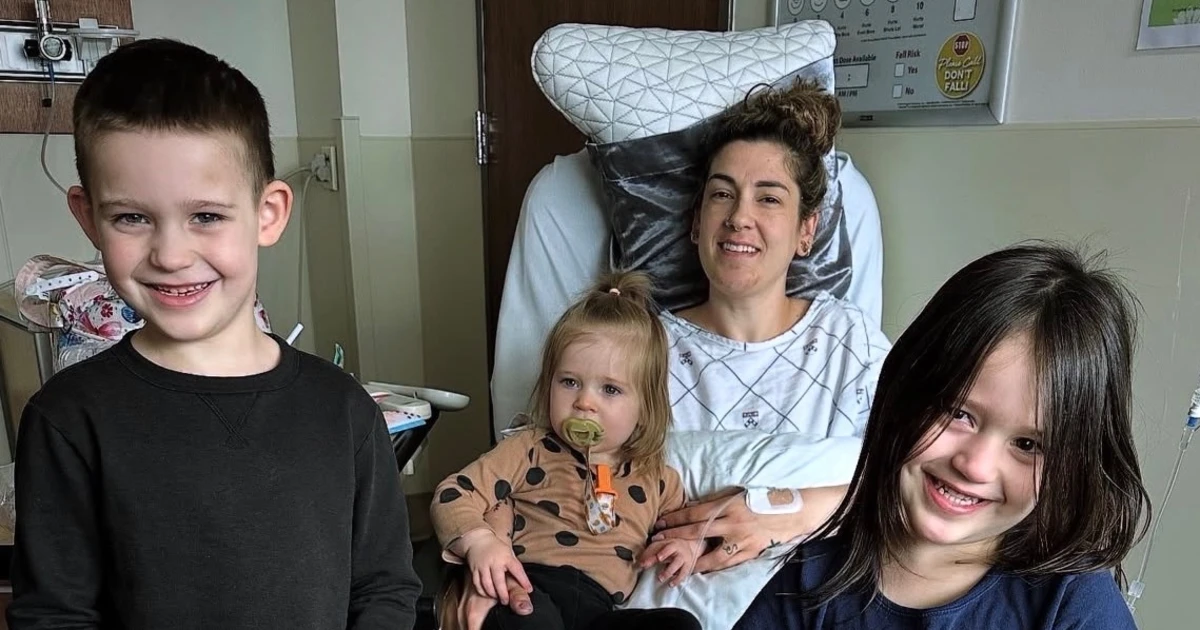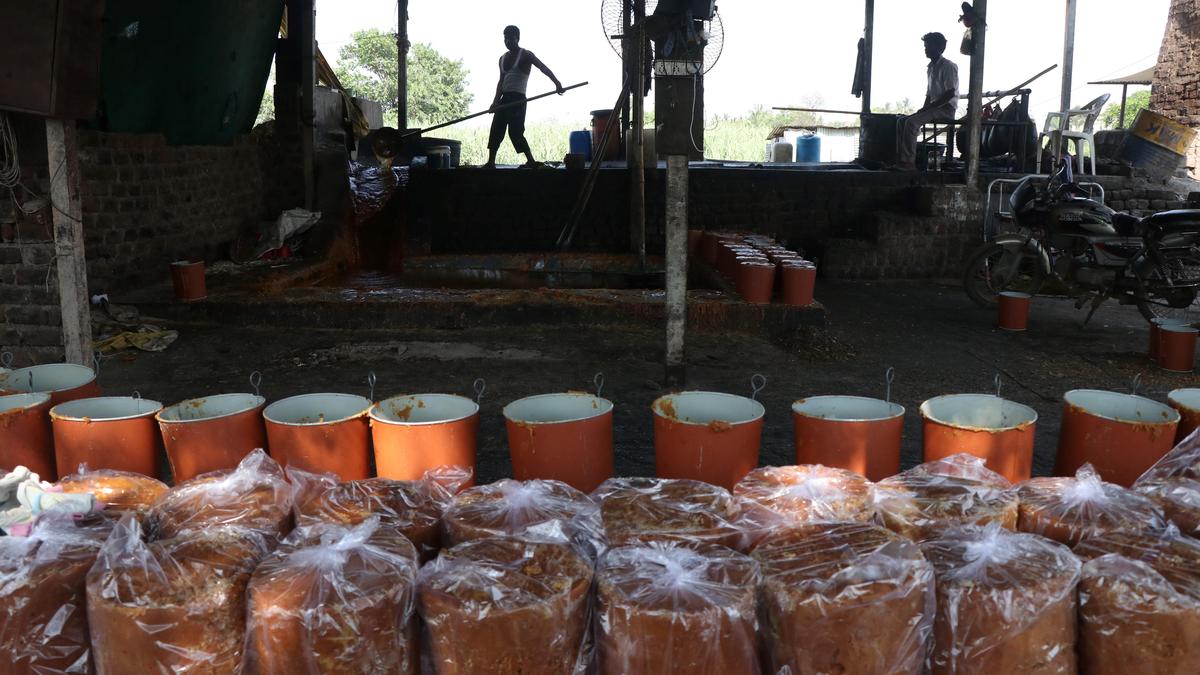Copyright TODAY

At the end of 2024, Amy Skoutelas was exercising five times a week and feeling better than ever. The 35-year-old mom had recently embarked on a fitness journey after the birth of her third child. She dusted off a Peloton her husband bought a while back and "dove in," she tells TODAY.com. "I was very disciplined and lost about 30 pounds. I was feeling the healthiest I’ve ever been,” says Skoutelas, who lives in Gilbertsville, Pennsylvania with her husband, Stefanos, and three children, Jackson, 6, Mia, 4, and Cora, 2. “We got lucky," says Skoutelas, adding that all her children are healthy and her family has had no major medical issues. "We don't have much cancer that runs in the family, either," she says. "It started with stomach pain" In January this year, Skoutelas noticed she had an unusual stomach pain and felt full quickly after eating dinner one night. "I thought it was trapped gas, but it continued ... and I kind of panicked because that wasn't my norm," she says. A few days later, she went to the emergency room. Skoutelas says she's always suffered from health anxiety, or a persistent fear one may have a serious illness or disease. "I don't wait and see. I need to know immediately what is going on with me, even though 99% of the time, it's nothing," she says. At the hospital, bloodwork revealed that Skoutelas had elevated levels of lipase, a digestive enzyme produced by the pancreas. Doctors chalked it up to possible inflammation and ordered a CT scan with contrast to check her organs. Unbeknownst to Skoutelas, the scan held a tiny clue that was missed for months. She says she was told at the ER that she was fine and to follow up with a gastroenterologist. “I wasn't aware the GI office only got the verbal report, which said my pancreas looked normal," and not the image of the scan itself, she says. Skoutelas was told she likely had constipation, so she increased her fiber and fluid intake. However, her symptoms persisted. Indigestion and Stool Changes "I was having gas and bloating. I kept feeling like I needed to have a bowel movement, but nothing was happening ... I also developed really bad acid reflux," says Skoutelas. After weeks of indigestion, she started having diarrhea and a "gnawing" sensation in her stomach. "I could not stop going to the bathroom," she recalls. Concerned, Skoutelas went back to her gastroenterologist, who did an X-ray to check for a bowel obstruction — there was none. Over the next few months, her symptoms persisted and she kept pushing for answers. She had more bloodwork, an upper endoscopy and a gastric emptying study, which were normal. She says her symptoms were continuously dismissed as gastrointestinal issues. "I was scared. I just knew something was not right," she adds. In April, Skoutelas got a second opinion from a new gastroenterologist, who ordered an MRI. It revealed a 1.7-centimeter mass in her pancreas. The pancreas is a large gland that sits behind the stomach. It has a head, which meets the small intestine, a body, and a tail, which is next to the spleen. Skoutelas’ mass was located in a duct in the tail of her pancreas, which carries digestive enzymes. “It was very small, but it was blocking the duct, which is why I was experiencing all of the acid reflux, the indigestion, the diarrhea,” she says. After a biopsy, Skoutelas got the news she feared the most: It was pancreatic adenocarcinoma, a type of cancer. "I just collapsed on the floor. ... I was on the phone with the doctor, like, 'I don't want to die. I have three kids.' ... I was in complete disbelief," she recalls. Pancreatic Adenocarcinoma Pancreatic adenocarcinoma is a type of pancreatic cancer that starts in the ducts of the pancreas. It's the most common form of pancreatic cancer, per the American Cancer Society. Skoutelas' cancer was Stage 3, which means it had spread to some nearby lymph nodes but not to other organs. The overall five-year survival rate for pancreatic cancer is 13%, but for localized cancer that can be removed completely, the average five-year survival rate is up to 44%, according to the ACS. Skoutelas was told she needed chemotherapy and surgery. “There was zero time to process anything. It’s just fight or flight and do what you need to do to survive,” she says. She sought a new care team and found a surgeon specializing in pancreatic cancer at the University of Pennsylvania Hospital in Philadelphia. At her first appointment, she received more news. "I had sent all my records, and the doctor pulled up my CT scan from January and said, your tumor is right here. ... I was like, 'Are you kidding?'" she says. The tumor was small and difficult to see, but it was indeed visible on her scan from the ER six months prior. Although she felt let down by the doctors who missed her tumor, Skoutelas says she felt extremely confident in her new surgeon. Pancreatectomy and Chemotherapy On May 23, Skoutelas had a distal pancreatectomy to remove the tail and body of her pancreas, and her spleen was removed. Her surgeon was able to resect the entire tumor in her pancreatic duct and remove 35 lymph nodes, seven of which were affected. She says she was very lucky, as surgery is not always an option for pancreatic cancer patients, especially Stage 3 and above. "I did have clear margins, thankfully, and there was no metastasizing, so it had spread (to some lymph nodes), but was still localized," Skoutelas explains. After recovering from surgery, Skoutelas got a chemo port in June and started 12 rounds of folfirinox. "It's been a really intense, crazy ride," she adds. She just completed the last week of her 10th round. “I was able to have a full resection, clear margins, and only had 20% lymph node involvement, and I’m young ... so they’re treating me with the intent to cure," says Skoutelas, adding that she had a scan in September, which showed no evidence of disease. Pancreatic Cancer Is Easy To Miss Pancreatic cancer is hard to detect because it doesn't usually cause symptoms in the early stages. When it does, the symptoms are usually nonspecific and mistaken for other issues. Possible symptoms of pancreatic cancer include abdominal pain, digestive problems, weight loss, changes in bowel habits, fatigue and new-onset diabetes. There’s no routine screening to detect pancreatic cancer early, and tumors can be difficult to find through imaging because pancreas is located deep in the body, hidden behind other abdominal organs, TODAY.com reported previously. As a result, pancreatic cancer is often found late, after the tumor has spread to other organs. While rare, it's one of the deadliest cancers. Skoutelas says if she hadn't been so persistent, she fears the cancer would've gone unnoticed and progressed: "I probably wouldn't have seen my 40th birthday if I had waited." "Be your own best advocate." November is Pancreatic Cancer Awareness Month. “I want to spread my story, not to scare people, but to (say) hey, you know yourself, and when something is not right," Skoutelas says. “Be your own best advocate. If you don’t feel that you’re being heard or seen, get a second opinion. ... Sometimes you still have to push for answers." Unexpectedly, Skoutelas' cancer journey has helped her health anxiety, which she says had "really taken a toll on my life and ruined a lot of special moments." After so many years of worrying, she now feels like a different person. "Cancer was the worst possible thing, (but) here I am, facing it. I'm already in the pits, so what else do I have to fear?" she says. These days, Skoutelas is cherishing time with her children and husband. She's more appreciative of the small things that bring her joy, like the leaves changing color and crocheting. "My whole life, it was always the 'what ifs' and (focusing on) tomorrow, or the next day. It was never right now. It's been really beautiful to see myself be able to be present and enjoy things," she says.



